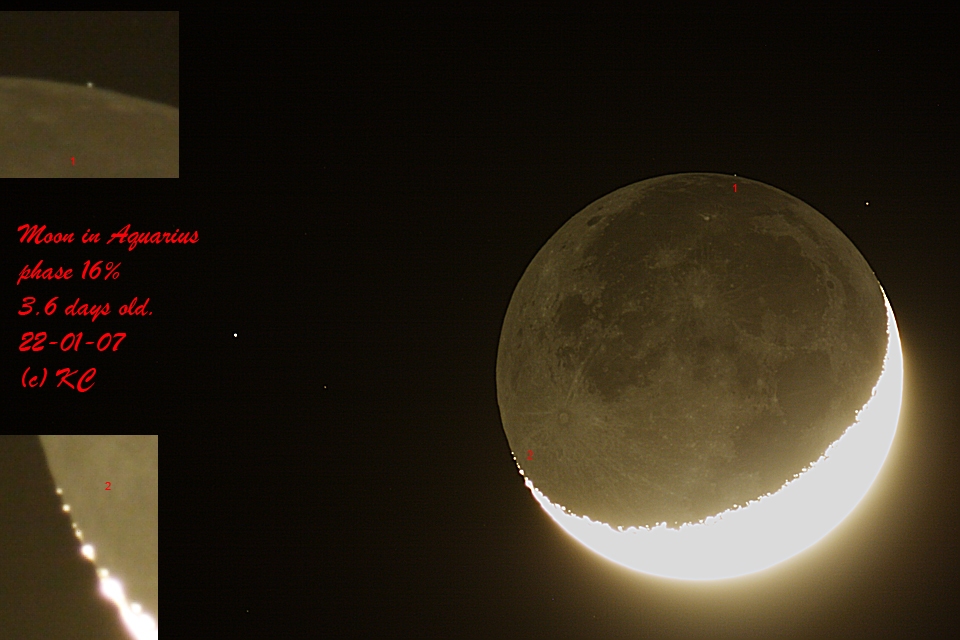
image by Kostas Christodoulopoulos , Korinthos, Greece
With many creative imagers around the globe, interesting shots of the Moon are appearing with greater frequency in the LPOD emailbox. I am always anxious to open LPOD emails tagged as having attachments, hoping I’ll see or realize something new. Kostas, a first time contributor to LPOD, did not disappoint. His image of yesterday’s 3.6 day old Moon beautifully shows 84% gently bathed in soft Earthlight. Aristarchus, the “active volcano” that William Herschel reported to the Royal Society in 1787, is the brightest feature on the still cold part of the Moon. Kostas has also caught a star in Aquarius close to the dark limb (above the small red 1 on the big image and the top small one to the left). I don’t know if this was a graze, an occultation, or just a very close call. At the bottom of the bright crescent is another unusual phenonmenon. The farside is mostly illuminated, and as the Sun rises more and more on ourside, its light rotates around the pole. The beads of bright light are places where the Sun is just rising with the month’s first light passing through the low places; beacons of a new day. This is really just an edge-on view of the roughness of the terminator that we usually see from above - look closely at the jagged terminator along the rest of the image. This is the way people living on the Moon will see daybreak, a series of bright searchlights pouring through the low spots before becoming overwhelmingly bright. And before these spotlights they will see the solar corona. I want to live there, or at least visit!
There is another chapter to this story. Such beads were reported in May 2006 by Stephen Saber, and fellow amateurs Curt Renz and Carol Lakomiak named them Saber’s Beads. The online discussion states that they are visible when the Moon is just about a day away from new, but Kostas has them at an age of 3.6 days.
Technical Details:
Jan 22, 2007. Vixen 102M,Skysensor 2000 PC + Canon EOS 300D + Wratten 8 filter + Photoshop CS + MaxDSLR; 13 sec exposure, ISO 100.
Yesterday's LPOD: Oh Yes. Notice the Moon's Reflection in the Ocean
Tomorrow's LPOD: One or Two Craters?
COMMENTS?
Register, and click on the Discussion tab at the top of the page.
Contributions to http://www2.lpod.org/ are licensed under a Creative Commons Attribution No-Derivative-Works Non-Commercial 3.0 License. 



